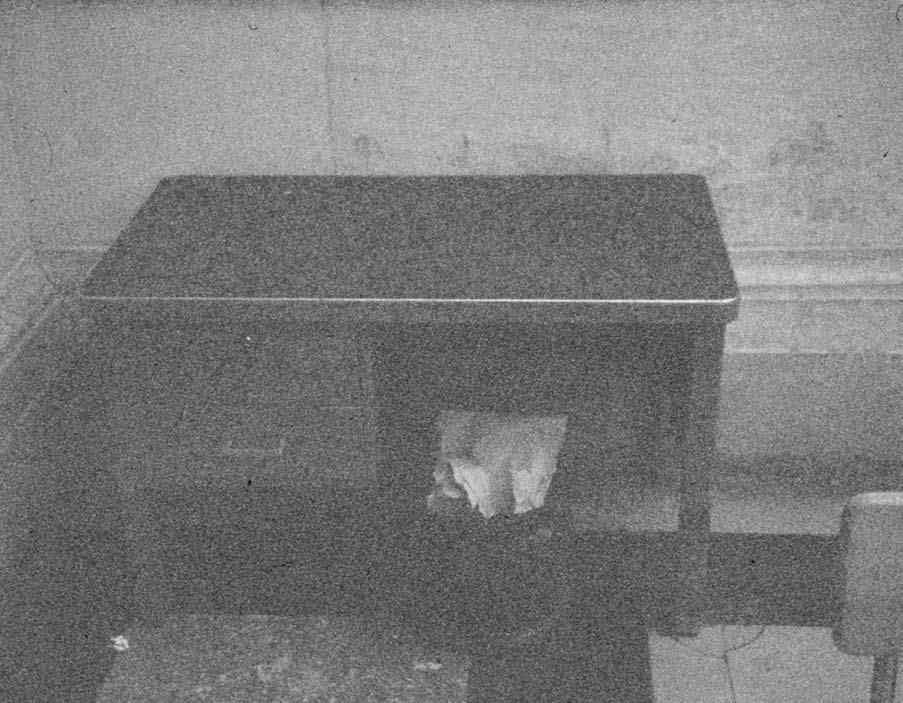
In a tally of the many eloquent objects that populate the novels of WG Sebald — the skull of the seventeenth-century physician Sir Thomas Browne, a plaster cast of the left hand of Stendhal’s beloved Mathilde, a variety of diseased organs preserved in a museum of veterinary medicine, to name only a handful of the more grisly — a special place ought to be reserved for the curious number of writing desks to which the author adverts. They are in truth no less intimately vocative of the lives of those who sat at them than are passports, photographs, and body parts.
Readers of The Rings of Saturn, for example, will recall the desk of the narrator’s late academic colleague, Janine Dakyns, a surface so laden with notes, letters, and other documents that it has come to resemble a paper glacier, spilling slowly onto the valley floor of her office. Later in that book, Sebald (or his fictional stand- in) visits the poet Michael Hamburger and finds himself gazing, stunned, at a heavy mahogany bureau, feeling obscurely connected to the desk, the room, the house, and his friend’s life there. What these items share is a physical affinity with those who use them. Like old clothes, they have shaped themselves to the intellectual or creative contours of their owners. They are also, of course, reminders of Sebald’s own intuitive working methods; we may picture him at his desk, arranging his notes, obsessively curating the photographic fragments that punctuate his text.
But there is another species of desk in Sebald’s books, allegorizing another sort of labor: the detailed work of functionaries in the machinery of state power. In Austerlitz, the narrator recalls that his voluminously learned friend, the restless exile scholar of the book’s title, was appalled at the architectural hypertrophy of the Palace of Justice in Brussels. The massive structure, Austerlitz tells him, was built by the architect Joseph Poelaert in 1883; the finished building — if such a labyrinthine edifice can be said to have been completed — is the largest agglomeration of stone in all of Europe. Wandering its deliberately oppressive halls, he has discovered permanently darkened courtyards, forgotten offices, and rickety staircases that lead to “dark cul-de-sacs with roll-top cupboards, lecterns, writing desks, office chairs and other items of furniture stacked up at the end of them, as if someone had been obliged to hold out there in a state of siege.”
The desks are still there. In December 2007, when I visited, the Palace of Justice bristled with scaffolding, just as it does in the blurred gray photograph that accompanies Austerlitz’s account of it. Inside, in the gloom of a cavernous foyer, gowned lawyers received their clients in a series of plush recesses, each furnished with an imposing desk, weakly glowing lamp, and enormous radiator of antique design. A strange hush presided, and my companion and I went unaccosted as we crossed the lobby toward a huge marble staircase. Upstairs, in the shadows, we discovered the first phalanx of abandoned furniture. Weighty writing desks of dark wood, each about three yards wide and a yard deep, decorated with classical motifs and topped with green leather, had been shunted against the walls. It was as if a whole stratum of bureaucratic endeavour had been stripped away, its infrastructure left to gather dust.
The whole of the Palace of Justice was like that. We wandered for an hour along spacious but dismal corridors, at the end of which gleaming black tables were stacked and forgotten. We snuck up ill-lit staircases — only once did somebody ask whether we were lost — to find beautiful bent-plywood desks from the 1950s, shoved chairless into dingy corners. We pushed open huge polished doors to discover musty vestibules (presumably to court chambers), in each of which, inevitably, some archaic item of furniture stood like an aged attendant. When we emerged again onto an upper level of the lobby, we found, tucked behind a pillar, a small bureau, resembling an old school desk, whose lid opened to reveal crumbling documents, chocolate wrappers, and ancient office supplies.
By far the strangest item of neglected furniture, however, was just off the lobby, on the right heading toward the exit, adjacent to the infirmary, in a windowless anteroom filled with wooden benches. It was stuck in a corner, a dull gray metal desk, probably made of aluminum or pressed steel and appearing to date from the middle of the last century, with rounded corners and a single drawer. Though its design suggested use in an office, the desk was so small that you could hardly imagine an adult seated at it. It seemed to have shrunk into its corner over time, or the building to have grown to even more monstrous proportions, dwarfing the objects that, as Sebald writes, “know more about us than we know about them: they carry the experiences they have had with us inside them and are — in fact — the book of our history opened before us.”
I took one photograph of the tiny metal desk before my camera jammed. I knew right away that it was underexposed. The film turned out to be a dull mass from which only the scantest information could be extracted. The cracks in the marble floor were scarcely visible; the black wastepaper basket had almost vanished in grainy shadow. One thing remains clear, however — the furniture is not unused, after all. A clue is in the wastepaper basket and scattered on the floor in front of the desk. The building’s strange interstitial spaces are full of litter; it is obvious that someone is sitting at those desks, even the ones crammed into the most inaccessible nooks. The building, despite itself, has produced a kind of private space, for the fearful, the bored, the guilty, and the dispossessed — ghosts hunched painfully over the abandoned desks in the Palace of Justice.